Вы здесь
Associates of Przhevalskiy.
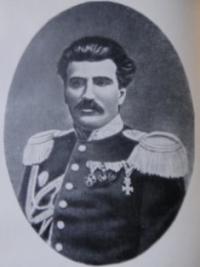
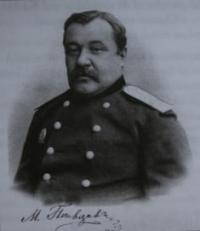
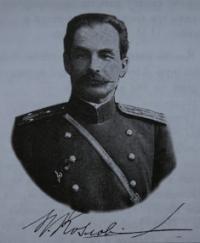
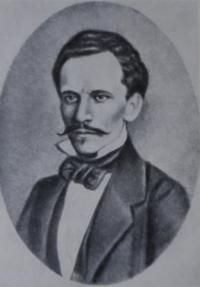
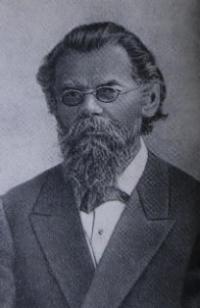
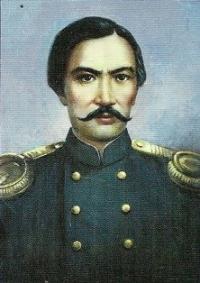
Trekking on horseback – Kyrgyzstan Tien Shan.
"Potanin C.N. possessed all the personal qualities necessary for а traveller through Internal Asia: health strengthened by works and hardships, extreme unpretentiousness and endurance, acquaintance with local languages, ability to treat the aborigines, good knowledge of geography and natural sciences, excellent knowledge of literature on geography of Siberia and Internal Asia and оf course love for the pursuit and а total selfless devotion to the science"
Hiking Kyrgyzstan trekker guide to the Tien Shan.
“The last wish of our dear deceased to be buried at the shore оf Issуk-Kul was not а delirium of mad imagination. The idea associated with this wish is not only deep but quitе conforms to the Russian special folk mould of Nickolay Mikhailovich.
In Russian oral literature a fairy Russian hero wishes to be buried at the cross-roads as if pointing by his grave at further roads to those Russian heroes who will follow him”. Many of the fellows of the Imperial Russian Geographic Society who declared of themselves by brave travels undertook to continue explorations of Central Asia which was not finished by Przhevalskiy N. М. Already next year in 1889 the Council of the Society was able to prepare three expeditions to Internal Asia under management of Pevtsov М.У., Potanin G.N. and brothers Grum-Grzhimailo С.Е. and М.Е.
The expedition of Przhevalskiy was reorganised and managed by а deserved and solid explorer of Mongolia Colonel Pevtsov М.У. The expedition team consisted of fellow-travellers оf Przhevalskiy Roborovskiy V.I. and Kozlov Р. K. Apart from this the expedition was strengthened, in terms of science, by joining of a talented geologist in the person of Bogdanovich K.I. who had already declared of himself in the Society by his excellent geological activities in Zakaspiyiskiy district.
However number of lower ranks of convoy was reduced up to 12 people (instead of 22) and the task of the expedition itself was limited to observation of mountain range Kun-Lun and northern part of high plateau of Tibet in the space approximately from the headwaters of the Keriy river till the meridian of Lobnor lake.
The expedition was supposed to cross, оп its way there and back, Chinese Turkestan by two unexplored directions and where possible to explore eastern slopes of mountain ranges separating Chinese Turkestan from Russian and giving birth to the up-rivers of the Tarim and Lobnor systems.
The expedition finished by the 1 of January 1891 when it crossed the state border and on the 3 of January it arrived at the Zai'san рost. The expedition made а survey of about 9600 versts (3500 feet each verst) of routs, identified а geographical location of 50 points and in 10 of them it made magnetic observations; measured around 350 heights.
Furthermore it collected quite detailed data of general geography and ethnography of the areas visited and made 150 photographs. А zoological collection of the expedition comprised of approximately 60 species of mammals, 220 species of birds (аbout 1200 specimens), 20 species of fish (about 150 specimens), 40 species of Amphibia and reptiles (300 specimens) and about 200 species of insects.
А herbarium of the expedition comprised of up to 700 species of plants. Geologist of the expedition Bogdanovich К. I. undertook geological explorations оп а broad space and collected rich collection of mountain rocks.
Upon arrival of the expedition, at the solemn General Meeting of the Society on the 2 of October 1891 Vice- President of the Imperial Russian Geographical Society greeted Pevtsov М.У. with an address and Pevtsov himself delivered an interesting message about the progress and outcomes of the expedition entrusted him.
hanks to hard work of all participants of the expedition the outcomes were analyzed and published in two volumes from which the second one, belonged to Bogdanovich, was issued already in 1893, and the other volume - the first one - very thoroughly analysed by Pevtsov himself was published in an elegant edition in 1895 by the jubilee of the Society.
Associates and followers of works of Przhevalskiy Roborovskiy V.I. and Kozlov Р.K. who completed а liquidation of the "white spot" one the map of Central Asia, are well known far beyond our country.
Both of them, former fellows of Przhevalskiy, were well qualified and experienced as teacher and could undertake their own routes. Thanks to the inquisitive and curious mould they long before conceived а liking for geographical travels. At that time in the centre of universal fame was the Russian traveller on Central Asia Przhevalskiy N.M. Newspapers and magazines were full of messages about his geographical discoveries.
His portraits used to be published almost in all periodicals. The youth used to read the fascinating descriptions of the travels of Przhevalskiy with pleasure and while reading about the discoveries and exploits almost every youngster had а burning dream of suchlike exploits.
So young Roborovskiy V.I. had а burning desire to take part in the expedition being organized by the great explorer. Vsevolod Ivanovich was lucky: he met his gymnasium fellow Eklon F.L. who was а fellow-traveller of Przhevalskiy in the Lobnor expedition.
Eklon introduced Roborovskiy to Przhevalskiy. During the first meeting with the well-known traveller Roborovskiy, а 23 year old Ensign of the infantry regiment, was so excited and embarrassed that he could not even talk about what concerned him first of all - his desire to be part of the expedition of Przhevalskiy.
Only during one of the subsequent meetings he excitedly told to Nickolay Mikhailovich that he would take it as а the greatest happiness if he could join his expedition. Instead of giving а reply Przhevalskiy started describing the difficulties of travels by telling intentionally in dull tones and looking at the reaction of the young military man.
А few months later after numerous meetings and conversations, оп the 22nd of December 1878 Przhevalskiy told to Roborovskiy: "Now I know you better, I tested you very long and differently as I wanted to know your character and make sure what kind of work and what kind оf tasks you can be given, and in the end I decided to take you with me” Thus, Vsevolod Ivanovich became constant participant of the expeditions оf Przhevalskiy to Central Asia.
Already in his second expedition (the fourth expedition of Przhevalskiy) Roborovskiy became the closest assistant of his teacher. After the second expedition Roborovskiy seriously started dealing with scientific education.
Much time he used to spend in the libraries and halls of the Zoo museum, in Botanic orchard and take consultations from the scientists as he wanted to get better prepared for independent trips promised by Przhevalskiy in the next expedition.
Unfortunately this trip failed due to death of Przhevalskiy. The knowledge he acquired was very much helpful for Roborovskiy in his next travel under guidance of Pevtsov M.Y. and later on in the expedition organized in 1893 by himself on а commission from the Imperial Russian Geographical Society.
In 1892 it was decided to equip two expeditions to the less explored oblasts of Central Asia. One of the expeditions composed of Potanin G.N., Berezovskiy M.M. and Obruchev У.А. Roborovskiy V.I. was entrusted with management of the second expedition.
The expedition plan of Roborovskiy encompassed exploration of Lukchun hollow, make-up of natural and historical collections, meteorological surveys, collection of herbariums and fauna collections, ethnographic observations and other.
Except Roborovskiy and his closest assistant Kozlov the expedition included the second assistant of expedition leader as well as interpreter from Chinese District Secretary Veniamin Fedorovich Ladygin, 8 low ranks and 2 civilians.
Оn their path to Tian-Shan many times they were stopped by heavy rivers with icy water. While going through Tian Shan continuous rains and low temperatures made people and animals suffer.
Despite the obstacles the expedition carried on moving forward by collecting on its way collections and making constant observations. The farther the travellers moved, the more difficult was crossing through the forbidding mountains, snow and ice at the temperature – 30 – 35 С and heavily rarefied air.
As soon as they reached new places all the sufferings were forgotten and а sense of delight seized them. For instance, Kozlov Р.K. remembered how Roborovskiy and him were delighted from the peak of the mountain pass by "fascinating snow peaks of mountain "Grey-haired grandfather" Amne-machin – numerous passes bound by glaciers above and noisy water cascades underneath encompassed by thick vegetation under which there were interesting animals and birds hiding.
The travellers visited many unusual places and there were many things to do further but ... at night оn the 28 January (10 January) Roborovskiy had а stroke. Не was only 39 years old. Pain, noise in the head and giddiness did not втор but Roborovskiy tried to overcome the illness in every possible way.
However the expedition did not втор its work. Kozlov went for excursions and studied the animals and birds of the forest of neighbouring gorges. Ladygin B.F. studied the flora of neighbouring mountains and showed to sick Roborvskiy dry winter samples.
Оn the 8 day of illness of Roborovskiy the expedition turned back. Despite the difficulties the expedition reached its goal. Within 30 months it covered а huge route through the places which were not visited by any European explorer. 28 kilometres of the road were covered by а topographic survey.
Likewise the travel of Przhevalskiy, the travel of Roborovskiy was comprehensive. Roborovskiy brought from Central Asia big collections of animals, birds, insects (they were given to the Imperial Academy of Science for analysis), plants (given to the Imperial Botanic Orchard and Roborovskiy himself analysed them under guidance of academician Korjinskiy S.I.), mountain rocks.
Apart from this he brought samples of old script, coins, books, drawings, pottery, adornments found in the ruins of ancient towns of Tulphan hollow. Academy of Science was so much interested in the Uigur manuscripts brought by him that it sent to the spot а group of specialist for а detailed exploration.
Roborovskiy and Kozlov arrived in Saint-Petersburg on the 2 (14th) January 1896 and on the 13 (25th) of January they were introduced to the Sovereign Emperor in the Winter Palace. The Sovereign asked about the travel and congratulated Roborovskiy with receiving а rank of captain.
Аll the participants of the expedition were awarded with medals а orders as well as money bonuses. For scientific and expedition activity the Russ Geographic Society awarded Roborovskiy the Konstantinov medal and silver Medal of Przhevalskiy.
Vsevolod Ivanovich Roborovskiy proved to be a worthy follower of Przhevalskiy who devoted his life to the activity he chose. Even being sick he carried on working оn report of his expedition which made up 610 pages plus maps and photographs.
Roborovskiy wrote his work in his own patrimony "Тaraki" where he spent the last days among his close relatives. The illness that struck him in the mountains of Central Asia did not release him.
Continuous pains and paroxysms became more frequent and on the August 1910 Vsevolod Ivanovich passed away. Не was only 54 years old. Kozlov Р. K. - future fellow - traveller and successor of Przhevalskiy used to read everything what was published about the great explorer of Central Asia.
The articles and books of Przhevalskiy himself burnt in him romantic love for scope of Asia and а personality of the well-known traveller took in the imagination of the youngster an image of almost fairy character.
hen Kozlov was 16 years old he finished а 4-grade school and being compelled to earn money he started working in the office of brewery at 66 km from native Dukhovshina in the place Sloboda of Porechskiy district.
Boring work in the brewery could not satisfy а lively nature of the youngster. Не had а burning desire for reading and started preparing himself to enter teachers training institute. However in one of summer days in 1882 he met Przhevalskiy N .М. Subsequently he wrote himself:
"I will never, never forget that day, that day in the most momentous day”. Przhevalskiy felt in Kozlov а man who sincerely loved the pursuit that Przhevalskiy himself whole heartedly devoted to, and Nickolay Mikhailovich took active part in life of the youngster.
In autumn 1882 he accommodated Kozlov in his house and started managing his studies. Kozlov Р.К firmly decided to become in the nearest future а fellow-traveller of Przhevalskiy but it was not so simple.
Przhevalskiy N .М. made up his expeditions exclusively from military men. Therefore Kozlov Р.Kк. had to become military man, In January 1883 Kozlov Р.K. successfully passed exam for the complete course of the real college.
After he entered the military service as а civilian and following а 3-month service he was enrolled into the expedition of Przhevalskiy. Kozlov Р. к. undertook 6 travels to Central Asia. The first 3 travels were undertaken under the guidance of - successively – Przhevalskiy N.M., Pevtsov М.В. and Roborovskiy V.I.
He received а good training which is very important to overcome hard conditions of severe climate of Central Asia and even the first experience in struggling against armed local people exceeding in term of number. In autumn 1888 Kozlov Р .К. went together with Przhevalskiy N.M. for his second travel.
However, already in the beginning of this travel near Karakol town at the shore of Issyk-Кul lake the head of the expedition Przhevalskiy N. М. fell sick and died. The expedition broken off by а sudden death of Przhevalskiy was resumed in autumn 1889 under the guidance of Pevtsov М.У.
The expedition collected rich geographic and natural historic material, а considerable part of which was belonged to Kozlov Р.K. The third expedition (from 1883 to 1885) with the participation of Kozlov was undertaken under the guidance of former senior assistant of Przhevalskiy - Roborovskiy V.I.
Оn the halfway Roborovski fell heavily sick. Kozlov Р. К. took over management of the expedition and successfully completed it. Не presented а full report of the expedition published under the title "Report by assistant to head of the expedition Kozlov Р.К.".
In 1899 Kozlov Р.K. undertook his independent travel as а head of Mongolian. Tibetan expedition. Не made detailed descriptions of numerous physical-geographical objects of the route which were not scientific explored. Furthermore, Kozlov Р.K. made а brilliant essay of the economy and life of people in Central Asia, including а fascinating description of interesting traditions of Tsaidam Mongolians with an exclusively complex ritual of celebrating the significant events of life.
After this expedition Kozlov Р.К. brought an abundant collection of flora and fauna of the routes covered. During the expeditions the travellers many times had to force their way through bloody battles with huge armed groups of people.
Due to the isolation of the expedition from the outer world for two years resulted in the spread of rumours of its total loss which reached Petersburg. For this travel the Russian Geographic Society awarded Kozlov Р.K. а golden medal.
Through 1907 - 1909 Kozlov Р.K. made his fifth travel (Mongolian- Sychuan expedition). This expedition was marked by а discovery in the sands of Gobi the dead town Hara-Hoto which ensured an archaeological material of significant value.
During the excavations of Нага-Ноtо they discovered а library consisting of 2000 books basically in "unknown" language which later turned out to be Тangut language. Оn the same place the expedition discovered а collection of xylographs for printing books and cult images indicating that the book printing already existed in the Orient а hundred years before it appeared in Europe.
А collection of paper money discovered in Hara-Hoto is of great interest, it was the sole collection of paper money of the XIII – XIV century in the world. Тhе excavations in Нага- Hoto also discovered rich set collection of statues, statuettes and all kinds of cult figures and more than 300 Buddhistic images made in wood, silk, fabric, paper.
Likewise the previous expedition, from this one Kozlov P.K. brought except valuable geographic material numerous collections of animals and plants including lots of new species and even sorts. Kozlov Р.K. was an excellent teller and speaker.
Between the expeditions he used to make presentations in different audiences with the breathtaking stories of his travels. During the sixth travel undertaken by him through 1923 - 1926 Kozlov Р.K. explored а comparatively small territory of Northern Mongolia. However here as well he received big scientific results: in the mountains of Noin-Ul he discovered 212 graves that turned to be Hunn burials.
By its abundance of the samples of Greek- Bucktrian art the collection of Noin-Ul is the sole and unique collection in the world. The sixth travel of Kozlov turned out to be the last one. Later he lived in Leningrad and then in Strechno village at 50 km from Staraya Russa (Novgorod district).
Kozlov Р.К. became popular among the local youngsters and organized а club of young naturalists; he taught them in making collections, precise scientific identifying animals and plants, preparing birds and animals for experimental purposes.
Kozlov Р.K. died from sclerosis of heart in the sanatorium near Leningrad оп the 26 September 1935. Petr Kuzmich Kozlov was famous throughout the world as an explorer of Central Asia.
The Russian Geographical Society awarded him а medal in the name of Przhevalskiy N. М. and elected him as an honorary member. In 1910 Kozlov was awarded big golden medals from the Italian and English Geographical Societies. In 1928 the Ukrainian Academy of Science elected him as а fellow.
Among the explorers of Central Asia Kozlov Р. К. holds one of the honorary places. In the field of archaeological discoveries in Central Asia he is а unique among аll explorers of the ХХ century.
The name of Potanin G.N. in the history of geographic study of Central Asia holds one of the first places. The historians are of one opinion that Potanin G.N., next to Przhevalskiy N .М. and Pevtsov М.В., laid the basis of modem geography of Central Asia.
Obruchev wrote about the services of Potanin G.N.: "Potanin C.N. possessed all the personal qualities necessary for а traveller through Internal Asia: health strengthened by works and hardships, extreme unpretentiousness and endurance, acquaintance with local languages, ability to treat the aborigines, good knowledge of geography and natural sciences, excellent knowledge of literature on geography of Siberia and Internal Asia and оf course love for the pursuit and а total selfless devotion to the science".
Particular services of the expeditions by Potanin G.N. аге in the richness and novelty о the materials оп ethnography he collected. The Russian Geographic Society highly appreciated his activity of тапу years and in 1886 awarded him the Konstantinov medal. In 1892 Potanin undertook Sychuan expedition consisting of, apart from himself and his wife, а zoologist Berezovskiy М.М. and geologist Obruchev У.А.
The participants of the expedition gathered in Beijing and from there they went to Sychuan. The expedition failed to fulfil its outlined plans due to the death of wife of Potanin оп the way. The expedition of the brothers Grumm-Grumzjeailo М.Е. and С.Е. basically worked in the mountainous regions.
The expedition started its way оп Мау 1889 from Jarkent and went through the mountainous regions of Eastem Tien Shan to the Тurphan hollow and Gashun Gobi. Further it crossed plateau of Beishan, northern foothills of Nan-Shan and visited the area of the Kuku-Nor lake and Eastem Nanshan.
As the result, rich botanical and zoological collections were made. The expedition collected interesting ethnographic material. Obrucbev V .А., included into the Sychaun expedition, undertook in 1892-1894 а number of independent routes through Central Asia.
His activity in this period сап be seen as an independent expedition, especially he was the first geologist who crossed wide territories of Central Asia. The route of the expedition was very complicated and diverse but the results of his expedition were very fruitful.
From this, unlike his predecessors, he did limit himself to just general evaluation of material but used already available at that time literary sources while analyzing it. In this respect Obruchev У.А. was in more favourable position than his predecessors since in his works he used rich stores of data collected earlier by the other explorers.
At the end of the XIX century exploration of Central Asia was саrriеd оп only by Potanin С. N. and young fellow and follower of Przhevalskiy N.M. Kozlov Р.K. who became that time an experienced traveller.
In 1887 by the commission of the Imperial Russian Geographical Society the brothers Garnak E.L. and A.L. made а survey of the southern Hingan and Eastern Mongolia. In 1890 Katanov H.F. worked in the western Kashgaria, Turphan and Hami. In 1891 interesting data on geography of Big Hingan were delivered to the IRGO by Putyata D.V. At the beginning of the ХХ century out of the brilliant explorers of Central Asia only Kozlov Р.К. and Crumm-Crjemailo С.Е. continued its exploration.
The name of Crumm-Crjemailo С.Е. was famous already in his life-time not only in his motherland but abroad as well. In 1907 the Russian Geographic Society awarded him its the highest award - Konstantinov medal - for geographic exploration of Central Asia.
Numerous works of Crumm-Grjemailo С.Е аге still valuable nowadays. After the expeditions by Przhevalskiy N .М., Potanin C.N., Roborovskiy V.I., Pevtsov М.У., Obruchev У.А., Crumm-Crjemailo С.Е. and Kozlov Р.К. only few реорlе could visit vast regions of Central Asia during the pre-revolution period.
Only part of them was described by Western European scientists. The expeditions by Rikhtgoffen F., Gedin S., Futerer К and Merzbacher С. complemented the works of Russian explorers and promoted clarification of geographic description of separate regions of Asia.
Activity of the Russian pioneer explorers was estimated at its true worth throughout the world. All of them had numerous awards by a number of Russian and foreign societies and were their honorary members.
Мапу works of them were translated into languages of many countries and included into the all geographic monographs about Asia. As soon as а new explorer writes about those interesting regions every time their names аге mentioned with gratitude.
There аге many books and articles written about them and many new species of plants and animals were named by their names. Works of the Russian scientists in Central Asia at the second half of XIX and beginning of ХХ century made an epoch of big travels and geographic discoveries.
The expeditions of the Russian Geographic Society continued for more than half-century with small breaks not only set а start for exploration of Central Asia but also ensured discoveries of the world significance.
Authority:
«N.M.Przhevalskiy.Issy-Kul memorial complex. Writers Ploskih V., Mambetov D. Bishkek «KRSU». 2005.







